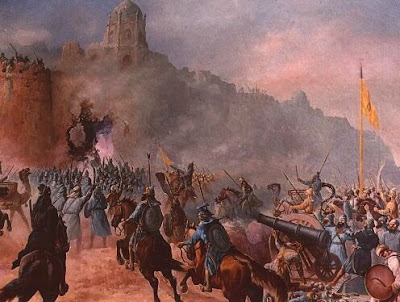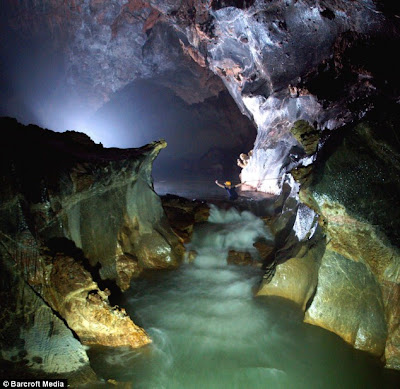Mobile phone
A mobile telephone or cellular telephone (commonly, "mobile phone" or "cell phone") is a long-range, portable electronic device used for mobile communiction. In addition to the standard voice function of a telephone, current mobile phones can support many additional services such as SMS for text mesasaging, email, packet switching for access to the Internet, and MMS for sending and receiving photos and video. Most current mobile phones connect to a cellular network of base stations (cell sites), which is in turn interconnected to the public switched telephone network (PSTN) (the exception are satellite phones).
History
The introduction of hexagonal cells for mobile phone base stations, invented in 1947 by Bell Labs engineers at AT&T, was further developed by Bell Labs during the 1960s. Radiophones have a long and varied history going back to the Second World War with military use of radio telephony links and civil services in the 1950s, while hand-held cellular radio devices have been available since 1983. Due to their low establishment costs and rapid deployment, mobile phone networks have since spread rapidly throughout the world, outstripping the growth of fixed telephony.
In 1945, the 0G generation of mobile telephones were introduced. 0G mobile telephones, such as Mobile Telephone Service, were not officially categorized as mobile phones, since they did not support the automatic change of channel frequency in the middle of a call, when the user moved from one cell (base station coverage area) to another cell, a feature called "handover".
In 1970 Amos Joel of Bell Labs invented the "call handoff" feature, which allowed a mobile-phone user to travel through several cells during the same conversation. Martin Cooper of Motorola is widely considered to be the inventor of the first practical mobile phone for handheld use in a non-vehicle setting. Using a modern, if somewhat heavy portable handset, Cooper made the first call on a handheld mobile phone on April 3, 1973. At the time he made his call, Cooper was working as Motorola's General Manager of its Communications Division.
Fully automatic cellular networks were first introduced in the early to mid-1980s (the 1G generation). The first fully automatic mobile phone system was the 1981 Nordic Mobile Telephone (NMT) system. Until the early 1990s, most mobile phones were too large to be carried in a jacket pocket, so they were usually permanently installed in vehicles as car phones. With the advance of miniaturization and smaller digital components, mobile phones got smaller and lighter.
Manufacturers
Nokia Corporation is currently the world's largest manufacturer of mobile telephones, with a global market share of approximately 36% in Q1 of 2007.Other mobile phone manufacturers include Audiovox (now UT Starcom), Benefon, BenQ-Siemens, High Tech Computer Corporation (HTC), Fujitsu, Kyocera, 3G, LG Mobile, Motorola, NEC, Panasonic (Matsushita Electric), Pantech Curitel, Philips, Research In Motion, Sagem, Samsung, Sanyo, Sharp, Siemens, Sierra Wireless, SK Teletech, Sony Ericsson, T&A Alcatel,Toshiba, Verizon, and soon to be Apple Inc.. There are also specialist communication systems related to (but distinct from) mobile phones, such as Professional Mobile Radio.
Technology
Mobile phones and the network they operate under vary significantly from provider to provider, and nation to nation. However, all of them communicate through electromagnetic radio waves with a cell site base station, the antennas of which are usually mounted on a tower, pole or building.
The phones have a low-power transceiver that transmits voice and data to the nearest cell sites, usually not more than 5 to 8 miles (approximately 8 to 13 kilometers) away. When the mobile phone or data device is turned on, it registers with the mobile telephone exchange, or switch, with its unique identifiers, and will then be alerted by the mobile switch when there is an incoming telephone call. The handset constantly listens for the strongest signal being received from the surrounding base stations. As the user moves around the network, the mobile device will "handoff" to various cell sites during calls, or while waiting (idle) between calls it will reselect cell sites.
Cell sites have relatively low-power (often only one or two watts) radio transmitters which broadcast their presence and relay communications between the mobile handsets and the switch. The switch in turn connects the call to another subscriber of the same wireless service provider or to the public telephone network, which includes the networks of other wireless carriers. Many of these sites are camouflaged to blend with existing environments, particularly in high-scenery areas.
The dialogue between the handset and the cell site is a stream of digital data that includes digitized audio (except for the first generation analog networks). The technology that achieves this depends on the system which the mobile phone operator has adopted. Some technologies include AMPS for analog, and D-AMPS, CDMA2000, GSM, GPRS, EV-DO, and UMTS for digital communications. Each network operator has a unique radio frequency band.

















































